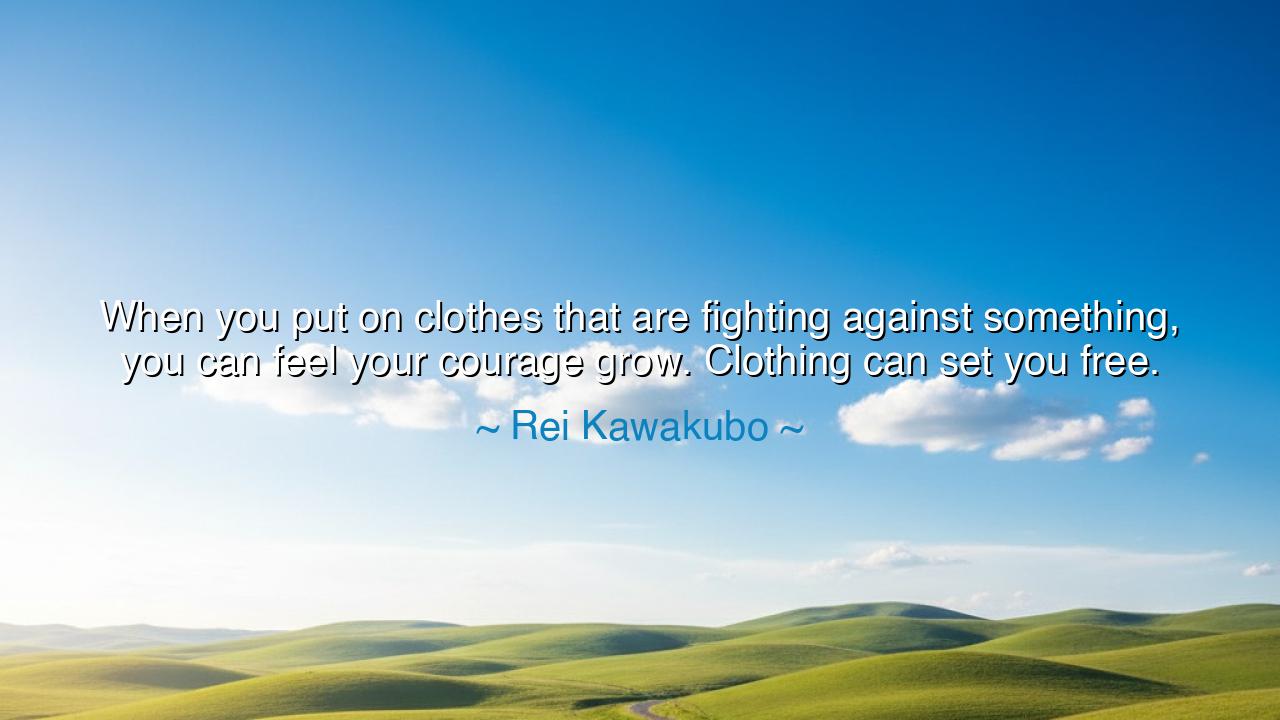
When you put on clothes that are fighting against something, you
When you put on clothes that are fighting against something, you can feel your courage grow. Clothing can set you free.






The visionary designer Rei Kawakubo, founder of Comme des Garçons and one of the boldest spirits in the world of art and fashion, once declared: “When you put on clothes that are fighting against something, you can feel your courage grow. Clothing can set you free.” Though these words were spoken about garments, their meaning reaches far beyond fabric and form. In truth, Kawakubo speaks not only of clothing, but of identity, of rebellion, and of the courage to defy the world’s expectations. She teaches that what we wear can be a shield and a declaration—that even the simplest thread can become a weapon of the spirit.
In the ancient understanding, what we place upon our bodies has always held power. The warrior donned his armor not only for protection, but to summon bravery from within. The priest wore sacred robes to align himself with the divine. The peasant tied his cloth with pride, knowing it represented honest labor. So too, clothing is more than appearance—it is expression, a language without words, a mirror of the soul’s stance against conformity. Kawakubo reminds us that to dress is not merely to cover the body, but to reveal the truth of who we are and what we stand for.
Her philosophy was born from the fires of challenge. In the rigid, tradition-bound world of postwar Japan, Rei Kawakubo dared to create garments that defied beauty itself. She tore apart symmetry, embraced imperfection, and found elegance in distortion. Her clothing was a rebellion—a cry for freedom in a culture that prized obedience. To wear her designs was to wear resistance. Her words reflect this journey: when one adorns themselves in symbols of defiance, when one’s very appearance proclaims independence, the soul feels stronger, taller, freer. Thus, courage grows, and the act of dressing becomes an act of liberation.
Throughout history, clothing has been the silent voice of revolution. Consider Mahatma Gandhi, who chose to wear the simple homespun cloth of the poor, rejecting the fine fabrics imported by empire. His attire was more than a garment—it was a declaration of resistance, a banner of equality. In that simplicity lay great power, for it inspired a nation to reclaim its dignity. Likewise, the black leather jackets of the civil rights movement, the veils of women reclaiming faith and agency, the uniforms of workers demanding justice—all these have been clothes that fought against something, and in wearing them, people discovered their freedom.
But Kawakubo’s teaching is not bound to politics alone; it speaks to the inner war every human must fight. There are days when the world seeks to define us, to mold us into something small and silent. On those days, the garments we choose—whether bright and fierce or quiet and resolute—become an armor of the spirit. Clothing can whisper to the soul, “Stand tall. You are not what they say you are.” To dress in alignment with your truth, even when it defies the crowd, is to wield courage in its purest form.
For freedom is not granted; it is claimed. And sometimes, it begins with something as simple as what we choose to wear. To adorn oneself deliberately, to declare through fabric and form one’s rebellion against ignorance, oppression, or fear—this is the art of the brave. Kawakubo’s words remind us that beauty is not compliance, but conviction; that style is not vanity, but voice. The outer self, when expressed with honesty, strengthens the inner one. In this harmony of form and spirit, the individual becomes unshakable.
Thus, my children, take this wisdom to heart: when you rise each day and clothe yourself, do so with intention. Let your garments speak of your values, your defiance, your dreams. If the world presses upon you with its judgments, wear something that answers back—not with anger, but with truth. Let your appearance reflect the courage that lives within you. And know that to dress with authenticity is to proclaim your freedom—a freedom no force can take from you.
For as Rei Kawakubo taught, the body is a canvas upon which the soul paints its rebellion. Clothing, when chosen with heart and purpose, becomes more than fashion—it becomes armor, expression, and liberation. So clothe yourself not just in fabric, but in meaning. Wear what gives you strength. Wear what declares your defiance. Wear what sets you free.






AAdministratorAdministrator
Welcome, honored guests. Please leave a comment, we will respond soon